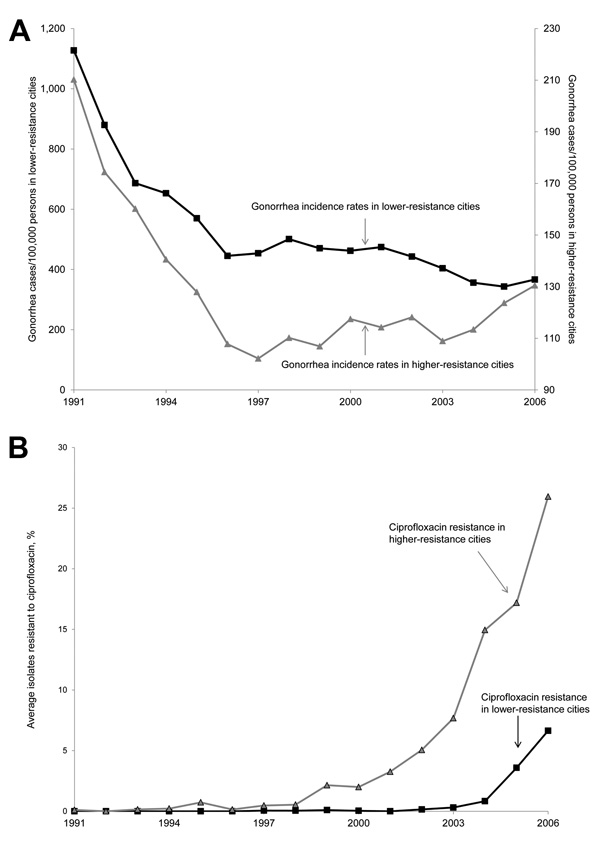Volume 20, Number 4—April 2014
Research
Ciprofloxacin Resistance and Gonorrhea Incidence Rates in 17 Cities, United States, 1991–2006
Figure

Figure. . . Ciprofloxacin resistance and gonorrhea incidence rates in 17 cities, United States, 1991–2006. A) Gonorrhea incidence rates and B) average percentage of isolates resistant to ciprofloxacin for 2 groups of cities with higher (above the median) and lower (at or below the median) percentages of isolates resistant to ciprofloxacin as of 2004. Cities with higher resistance were Denver (Colorado), Honolulu (Hawaii), Minneapolis (Minnesota), Phoenix (Arizona), Portland (Oregon), San Diego (California), San Francisco (California), and Seattle (Washington). Cities with lower resistance were Albuquerque (New Mexico), Atlanta (Georgia), Baltimore (Maryland), Birmingham (Alabama), Cincinnati (Ohio), Cleveland (Ohio), New Orleans (Louisiana), Philadelphia (Pennsylvania), and St. Louis (Missouri).